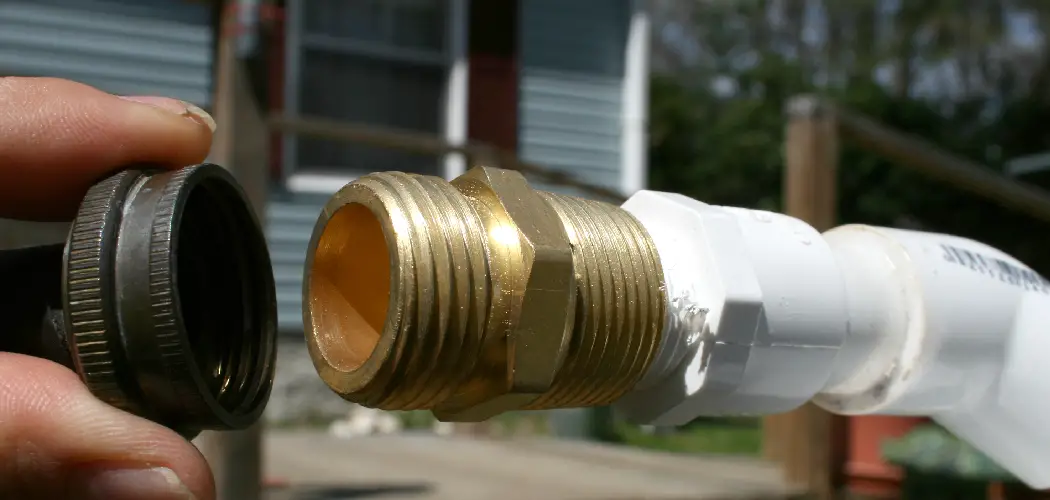Are you looking for the perfect solution to your moisture control problems? Are you looking to join up a hose to your PVC pipe for whatever project you’re working on? Well, look no further because we have the perfect guide that will help teach you how to connect hose to PVC pipe in no time.
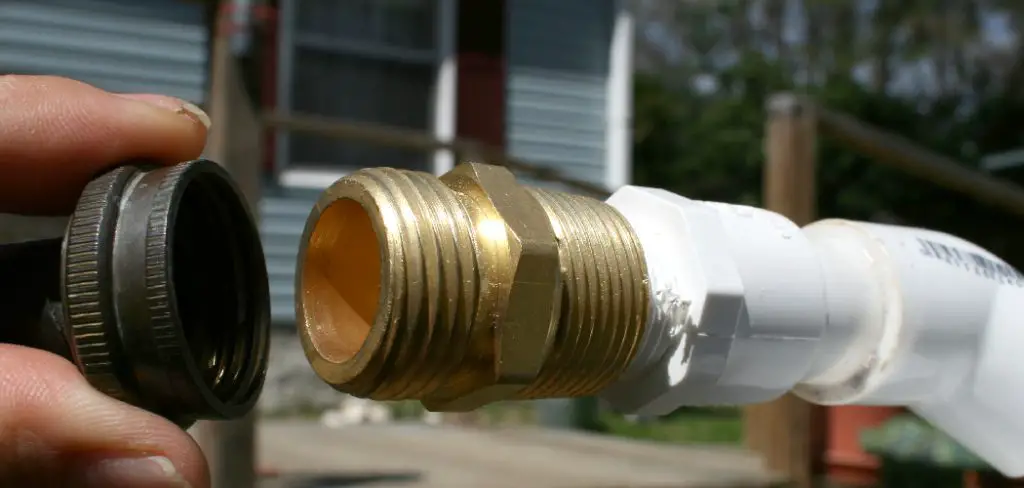
Connecting a hose to a PVC pipe can be a great way to ensure that water is safely and securely routed away from plants and other areas of a garden. Connecting hoses and pipes might initially seem intimidating – but it doesn’t need to be! This easy step-by-step guide includes everything from selecting the right type of fittings and materials through construction, so don’t worry if this is your first time tackling this task.
Whether draining a pool or repurposing an old water feature, we can connect hoses and pipes quickly and easily with our foolproof method. While this might seem like an intimidating project, don’t worry – we have all the information you need to connect PVC pipes and hoses in just three easy steps! We’ll walk you through exactly how it’s done so that everything goes off without a hitch, no matter where you’re located. So whether it’s your first time tackling such a project or if you’re an experienced DIYer, let us show you how easy connecting hose piping with PVC fittings can be!
Necessary Items
You will need a few basic items before you can connect your hose to PVC pipe. These include:
- A saw or pipe cutter
- Sandpaper or a deburring tool
- PVC primer and cement
- Hose clamp(s)
- A drill with a hole saw attachment (if required)
10 Steps on How to Connect Hose to Pvc Pipe
Step 1: Preparing the PVC Pipe
First, you will need to prepare your PVC pipe for the connection. Start by cutting the end of the pipe connected to the hose using a saw or pipe cutter. Make sure to make a clean and straight cut for a secure fit. Next, use sandpaper or a deburring tool to smooth out rough edges or burrs on the cut end.
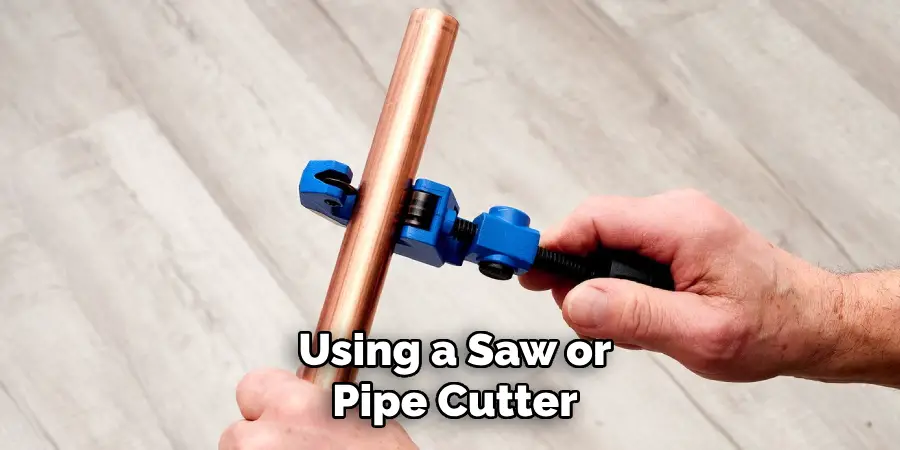
Step 2: Preparing the Hose
If your hose has a threaded end, wrap Teflon tape around the threads for a tighter seal. If your hose has no threaded end, attach one using a hose clamp and pipe fittings.
Step 3: Applying Primer
Before connecting the hose to the PVC pipe, you will need to apply primer to the end of the PVC pipe. This will help ensure a secure connection.
Step 4: Applying Cement
Once the primer has dried, you can apply cement on top of it. Be sure to use enough cement for a strong bond.
Step 5: Connecting the Hose Clamp
If you use a hose clamp, attach it to the end of the hose connected to the PVC pipe.
Step 6: Attaching Pipe Fittings (if needed)
If your hose has no threaded end, you can attach a pipe fitting to create one. Simply use a drill with a hole saw attachment to create a hole in the hose and then insert the fitting.
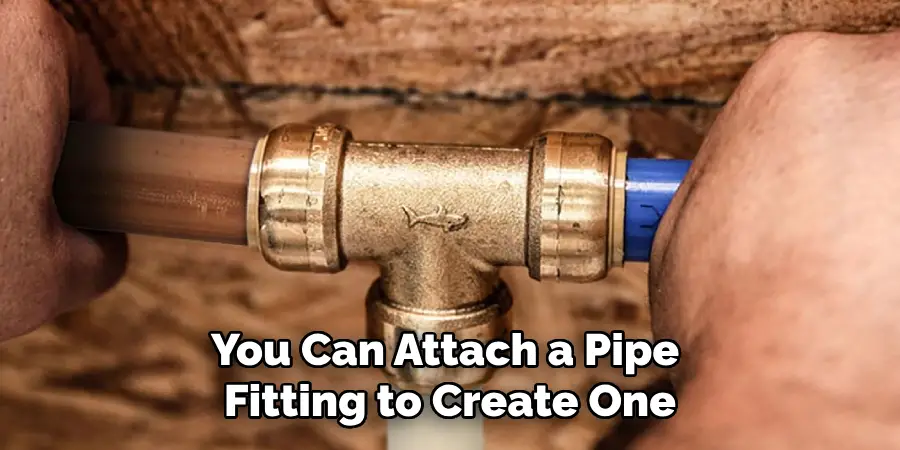
Step 7: Connecting PVC Pipe to Hose
Carefully place the hose over the end of the PVC pipe, ensuring any fittings or clamps secure it. Twist and push until the connection feels tight and secure.
Step 8: Securing the Connection
If needed, use additional hose clamps to secure further the connection between the PVC pipe and the hose. This will help prevent any leaks or disconnections.
Step 9: Allowing Time for Drying
After connecting your hose to the PVC pipe, it is important to allow sufficient time for the cement to dry completely before using the connected pipes.
Step 10: Testing the Connection
Once the cement has fully dried, it’s time to test your connection! Turn on the water and check for leaks or weak spots in the connection. If everything looks good, congratulations – you have successfully connected a hose to a PVC pipe!
By following these simple steps on how to connect a hose to a PVC pipe, you can easily connect a hose to a PVC pipe with confidence. Always take safety precautions and use the recommended materials for a strong and secure connection. With this helpful guide, you can complete your projects easily and have peace of mind knowing that your hose is properly connected to a PVC pipe. No more worries about moisture control – you’re now ready to take on any task that requires connecting hoses and pipes!
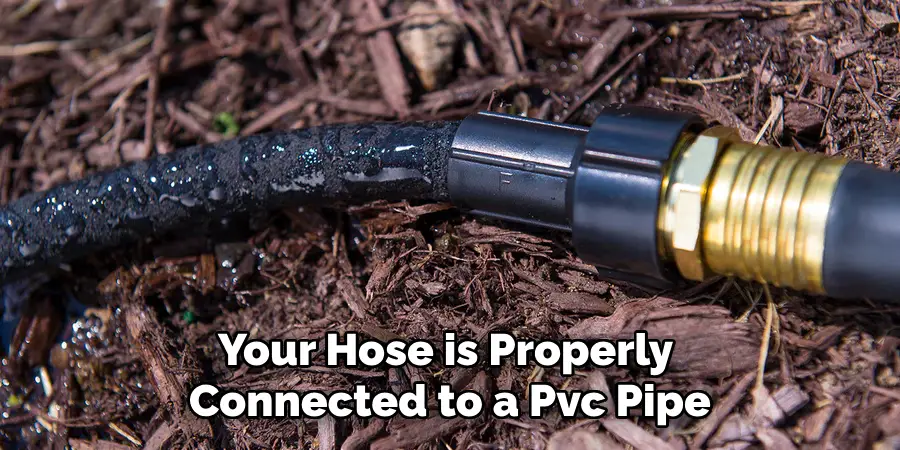
8 Care Tips for Your Pipes
Now that you have successfully connected your hose to PVC pipe, it is important to take proper care of your pipes to ensure they last for a long time. Here are some tips to help you maintain your pipes:
1. Consistent Temperature
As mentioned, maintaining a consistent temperature inside your home is key to preventing frozen pipes. Make sure to keep your thermostat set at 55 degrees Fahrenheit or above.
2. Regular Inspections
Regularly inspect your pipes for any signs of damage or leaks. Catching these issues early on can prevent more serious problems down the line.
3. Keep Cabinets Open
If you have pipes inside cabinets, keep the doors open to allow warm air to circulate and reach the pipes. This will help prevent them from freezing in colder temperatures.
4. Use Drain Strainers
To prevent clogs and potential damage to your pipes, use drain strainers to catch hair, food particles, and other debris before they enter the drain.
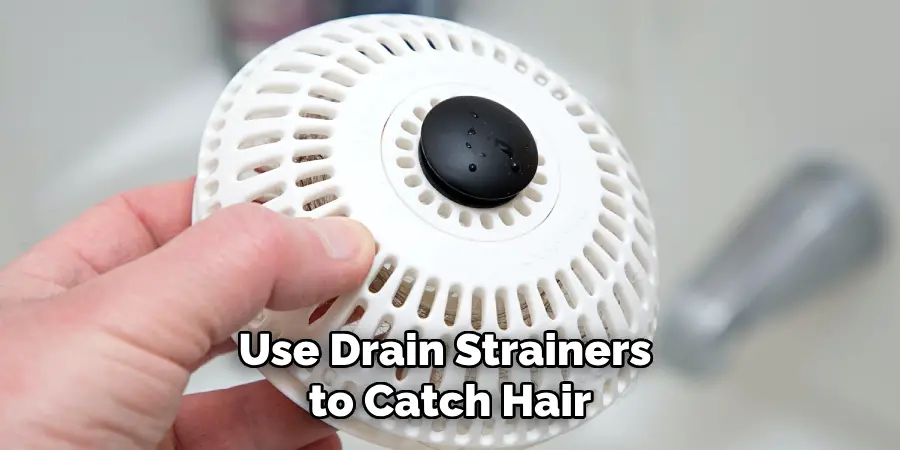
5. Winterize Outdoor Pipes
Before the cold weather hits, properly winterize outdoor pipes by draining and storing away hoses, shutting off exterior water sources, and insulating exposed pipes.
6. Be Mindful of Water Usage
Limit water usage as much as possible during freezing days or nights. This will help reduce pressure in the pipes and decrease the likelihood of them freezing.
7. Avoid Chemical Drain Cleaners
Chemical drain cleaners can corrode and damage pipes, so avoiding them is best. Instead, opt for natural alternatives or call a professional plumber.
8. Address Issues Promptly
If you notice any leaks or issues with your pipes, address them promptly to prevent further damage and costly repairs. Don’t hesitate to call a professional plumber for help if needed.
Connecting a hose to a PVC pipe may seem daunting at first, but it can be a simple task with the right tools and techniques. Following these steps and properly caring for your pipes can ensure a strong and secure connection that will last for years. Happy piping! So whether it’s your first time tackling such a project or just looking for a refresher, this guide has you covered. With these tips and tricks, you can confidently connect hoses to PVC pipes and maintain your pipes for optimal functionality. So go ahead and tackle that DIY project or fix that leaky hose with ease – your newly acquired knowledge will certainly come in handy!
Frequently Asked Questions
Can I Use Any Type of Hose for This Method?
Yes, as long as the hose is compatible with PVC pipe and can handle the water pressure.
Do I Need to Use Primer and Cement?
It is recommended, as these materials help create a strong bond between the hose and PVC pipe. However, if your hose has a threaded end and you’re using Teflon tape, primer and cement may not be necessary.
Can I Use a PVC Pipe for Drinking Water?
PVC pipe can be used for drinking water, but it is important to check with local regulations and ensure the pipe is labeled safe for potable water. In general, CPVC pipes are more commonly used for drinking water applications. So always research and take necessary precautions when using PVC pipe for drinking water.
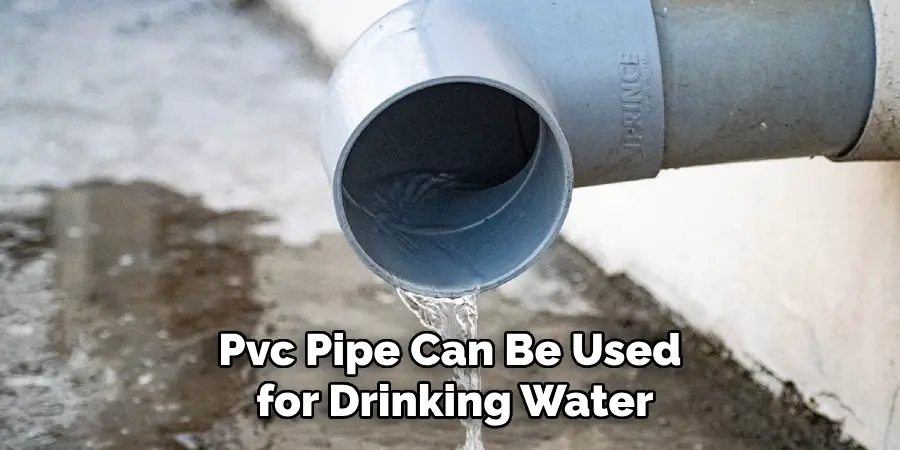
What if I Encounter Leaks After Connecting the Hose and PVC Pipe?
If you experience leaks, make sure all connections are tight and secure. If the leak persists, add more hose clamps or reapply primer and cement. If the issue continues, it may be best to consult a professional plumber. Remember – addressing leaks promptly is important to prevent further damage and costly repairs in the future.
How Long Should I Let the Cement Dry?
Check the instructions on your cement for specific drying times, but generally, it is recommended to wait at least 24 hours before using the connected pipes.
Can I Use This Method for Hot Water?
It is not recommended to use this method for hot water as PVC pipe and cement are not designed to withstand high temperatures. For hot water connections, consider using a different type of piping, such as CPVC or copper. However, if you must use PVC pipe for hot water, choose the appropriate materials and allow extra drying time for the cement.
What Should I Do If I Notice Leaks in My Connection?
If you notice leaks, try tightening any fittings or clamps that may be loose. If the leak persists, disassemble the connection and check for any cracks or damage. If needed, replace damaged parts and reassemble using new materials. It is also recommended to use additional hose clamps for added security. If you continue to experience leaks, consult a professional plumber for assistance. Remember, it’s important to address leaks promptly to prevent further damage and potential hazards.
Conclusion
Connecting a hose to a PVC pipe may seem daunting, but it can be easily accomplished with the right materials and techniques. By following these steps on how to connect hose to PVC pipe and taking proper care of your pipes, you can ensure a strong and secure connection that will last for years to come.
Connecting a hose to a PVC pipe is not difficult and should take the average DIY homeowner only around 30 minutes. Feel more confident now that you have the right supplies and technique, and start today. Remember, using Teflon tape and sealant is important for an optimal connection. Also, ensure your fittings are compatible by double-checking their sizes.
Following these steps will result in a secure connection that will provide long-lasting use. If, at any point during the installation, you encounter any questions or difficulties, do not hesitate to contact an expert in plumbing who can offer advice on how best to complete the task safely and successfully. Now, don’t let this project stand in your way of enjoying the comfort of running water–go out there and make your connection!
Remember always to prioritize safety and use recommended materials for optimal results. With this helpful guide, you can confidently tackle any project that requires connecting hoses and PVC pipes. Now, go forth and conquer your DIY tasks with ease! Thank you for reading. We hope this guide has been helpful to you.

